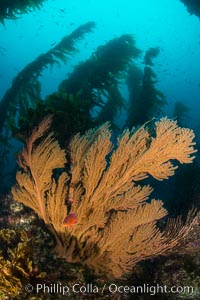
California golden gorgonian on underwater rocky reef below kelp forest, San Clemente Island. The golden gorgonian is a filter-feeding temperate colonial species that lives on the rocky bottom at depths between 50 to 200 feet deep. Each individual polyp is a distinct animal, together they secrete calcium that forms the structure of the colony. Gorgonians are oriented at right angles to prevailing water currents to capture plankton drifting by, San Clemente Island. The golden gorgonian is a filter-feeding temperate colonial species that lives on the rocky bottom at depths between 50 to 200 feet deep. Each individual polyp is a distinct animal, together they secrete calcium that forms the structure of the colony. Gorgonians are oriented at right angles to prevailing water currents to capture plankton drifting by.
Species: California golden gorgonian, Muricea californica
Location: San Clemente Island, California
Image ID: 30928
Species: California golden gorgonian, Muricea californica
Location: San Clemente Island, California
Image ID: 30928
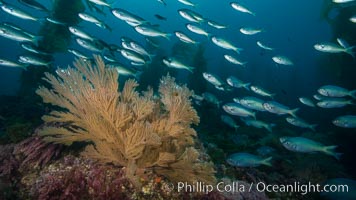
Blacksmith Chromis and California golden gorgonian on underwater rocky reef, San Clemente Island. The golden gorgonian is a filter-feeding temperate colonial species that lives on the rocky bottom at depths between 50 to 200 feet deep. Each individual polyp is a distinct animal, together they secrete calcium that forms the structure of the colony. Gorgonians are oriented at right angles to prevailing water currents to capture plankton drifting by.
Species: Blacksmith, California golden gorgonian, Chromis punctipinnis, Muricea californica
Location: San Clemente Island, California
Image ID: 30895
Species: Blacksmith, California golden gorgonian, Chromis punctipinnis, Muricea californica
Location: San Clemente Island, California
Image ID: 30895
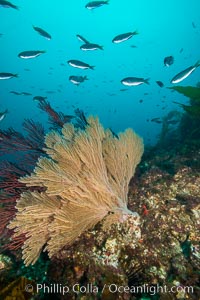
California golden gorgonian on underwater rocky reef, San Clemente Island. The golden gorgonian is a filter-feeding temperate colonial species that lives on the rocky bottom at depths between 50 to 200 feet deep. Each individual polyp is a distinct animal, together they secrete calcium that forms the structure of the colony. Gorgonians are oriented at right angles to prevailing water currents to capture plankton drifting by.
Species: California golden gorgonian, Muricea californica
Location: San Clemente Island, California
Image ID: 30900
Species: California golden gorgonian, Muricea californica
Location: San Clemente Island, California
Image ID: 30900
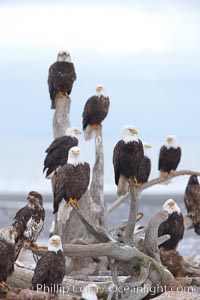
Group of bald eagles, part of a group of several hundred, perched on wooden driftwood stumps, waiting to be fed frozen fish on a winter morning, part of the Homer "Eagle Lady's" winter feeding program.
Species: Bald eagle, Haliaeetus leucocephalus, Haliaeetus leucocephalus washingtoniensis
Location: Kachemak Bay, Homer, Alaska
Image ID: 22656
Species: Bald eagle, Haliaeetus leucocephalus, Haliaeetus leucocephalus washingtoniensis
Location: Kachemak Bay, Homer, Alaska
Image ID: 22656
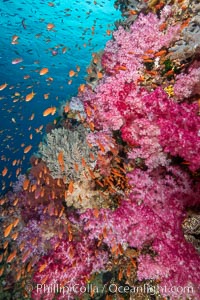
Dendronephthya soft corals and schooling Anthias fishes, feeding on plankton in strong ocean currents over a pristine coral reef. Fiji is known as the soft coral capitlal of the world.
Species: Anthias, Dendronephthya soft coral, Dendronephthya, Pseudanthias
Location: Fiji
Image ID: 34994
Species: Anthias, Dendronephthya soft coral, Dendronephthya, Pseudanthias
Location: Fiji
Image ID: 34994
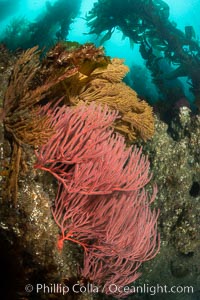
Red gorgonian and California golden gorgonian on underwater rocky reef below kelp forest, San Clemente Island. Gorgonians are filter-feeding temperate colonial species that lives on the rocky bottom at depths between 50 to 200 feet deep. Each individual polyp is a distinct animal, together they secrete calcium that forms the structure of the colony. Gorgonians are oriented at right angles to prevailing water currents to capture plankton drifting by, San Clemente Island. Gorgonians are oriented at right angles to prevailing water currents to capture plankton drifting by.
Species: Red gorgonian, Leptogorgia chilensis, Lophogorgia chilensis
Location: San Clemente Island, California
Image ID: 37059
Species: Red gorgonian, Leptogorgia chilensis, Lophogorgia chilensis
Location: San Clemente Island, California
Image ID: 37059
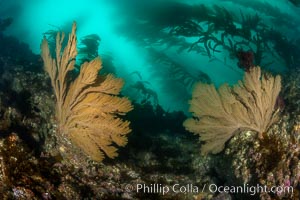
California golden gorgonian on underwater rocky reef below kelp forest, San Clemente Island. The golden gorgonian is a filter-feeding temperate colonial species that lives on the rocky bottom at depths between 50 to 200 feet deep. Each individual polyp is a distinct animal, together they secrete calcium that forms the structure of the colony. Gorgonians are oriented at right angles to prevailing water currents to capture plankton drifting by.
Species: California golden gorgonian, Muricea californica
Location: San Clemente Island, California
Image ID: 37078
Species: California golden gorgonian, Muricea californica
Location: San Clemente Island, California
Image ID: 37078
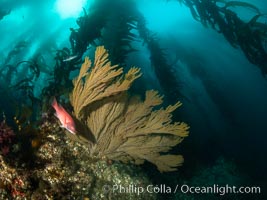
California golden gorgonian and small juvenile sheephead fishes on rocky reef, below kelp forest, underwater. The golden gorgonian is a filter-feeding temperate colonial species that lives on the rocky bottom at depths between 50 to 200 feet deep. Each individual polyp is a distinct animal, together they secrete calcium that forms the structure of the colony. Gorgonians are oriented at right angles to prevailing water currents to capture plankton drifting by.
Species: California golden gorgonian, Muricea californica
Location: San Clemente Island, California
Image ID: 37095
Species: California golden gorgonian, Muricea californica
Location: San Clemente Island, California
Image ID: 37095
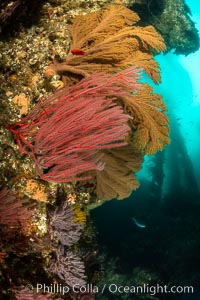
Red gorgonian and California golden gorgonian on underwater rocky reef below kelp forest, San Clemente Island. Gorgonians are filter-feeding temperate colonial species that lives on the rocky bottom at depths between 50 to 200 feet deep. Each individual polyp is a distinct animal, together they secrete calcium that forms the structure of the colony. Gorgonians are oriented at right angles to prevailing water currents to capture plankton drifting by, San Clemente Island. Gorgonians are oriented at right angles to prevailing water currents to capture plankton drifting by.
Species: Red gorgonian, Leptogorgia chilensis, Lophogorgia chilensis
Location: San Clemente Island, California
Image ID: 37116
Species: Red gorgonian, Leptogorgia chilensis, Lophogorgia chilensis
Location: San Clemente Island, California
Image ID: 37116
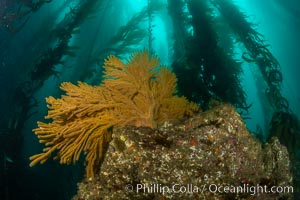
California golden gorgonian on underwater rocky reef below kelp forest, San Clemente Island. The golden gorgonian is a filter-feeding temperate colonial species that lives on the rocky bottom at depths between 50 to 200 feet deep. Each individual polyp is a distinct animal, together they secrete calcium that forms the structure of the colony. Gorgonians are oriented at right angles to prevailing water currents to capture plankton drifting by.
Species: California golden gorgonian, Muricea californica
Location: San Clemente Island, California
Image ID: 37118
Species: California golden gorgonian, Muricea californica
Location: San Clemente Island, California
Image ID: 37118
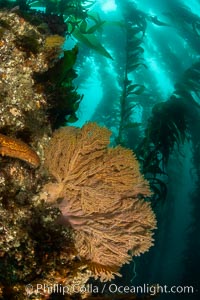
California golden gorgonian on underwater rocky reef below kelp forest, San Clemente Island. The golden gorgonian is a filter-feeding temperate colonial species that lives on the rocky bottom at depths between 50 to 200 feet deep. Each individual polyp is a distinct animal, together they secrete calcium that forms the structure of the colony. Gorgonians are oriented at right angles to prevailing water currents to capture plankton drifting by.
Species: California golden gorgonian, Muricea californica
Location: San Clemente Island, California
Image ID: 37119
Species: California golden gorgonian, Muricea californica
Location: San Clemente Island, California
Image ID: 37119
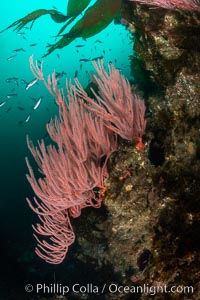
Red gorgonian on rocky reef, below kelp forest, underwater. The red gorgonian is a filter-feeding temperate colonial species that lives on the rocky bottom at depths between 50 to 200 feet deep. Gorgonians are oriented at right angles to prevailing water currents to capture plankton drifting by.
Species: Red gorgonian, Leptogorgia chilensis, Lophogorgia chilensis
Location: San Clemente Island, California
Image ID: 37121
Species: Red gorgonian, Leptogorgia chilensis, Lophogorgia chilensis
Location: San Clemente Island, California
Image ID: 37121
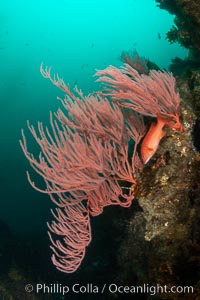
Red gorgonian on rocky reef, below kelp forest, underwater. The red gorgonian is a filter-feeding temperate colonial species that lives on the rocky bottom at depths between 50 to 200 feet deep. Gorgonians are oriented at right angles to prevailing water currents to capture plankton drifting by.
Species: Red gorgonian, Leptogorgia chilensis, Lophogorgia chilensis
Location: San Clemente Island, California
Image ID: 37122
Species: Red gorgonian, Leptogorgia chilensis, Lophogorgia chilensis
Location: San Clemente Island, California
Image ID: 37122
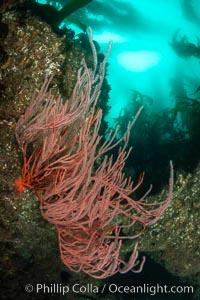
Red gorgonian on rocky reef, below kelp forest, underwater. The red gorgonian is a filter-feeding temperate colonial species that lives on the rocky bottom at depths between 50 to 200 feet deep. Gorgonians are oriented at right angles to prevailing water currents to capture plankton drifting by.
Species: Red gorgonian, Leptogorgia chilensis, Lophogorgia chilensis
Location: San Clemente Island, California
Image ID: 37125
Species: Red gorgonian, Leptogorgia chilensis, Lophogorgia chilensis
Location: San Clemente Island, California
Image ID: 37125
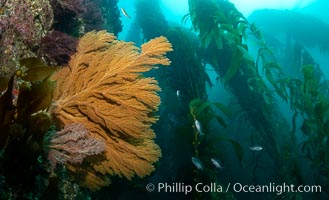
Golden gorgonian on underwater rocky reef, amid kelp forest, near Eagle Rock, Catalina Island. The golden gorgonian is a filter-feeding temperate colonial species that lives on the rocky bottom at depths between 50 to 200 feet deep. Each individual polyp is a distinct animal, together they secrete calcium that forms the structure of the colony. Gorgonians are oriented at right angles to prevailing water currents to capture plankton drifting by.
Image ID: 37135
Image ID: 37135
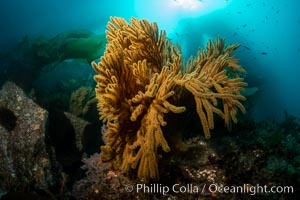
Golden gorgonian on underwater rocky reef, amid kelp forest, Catalina Island. The golden gorgonian is a filter-feeding temperate colonial species that lives on the rocky bottom at depths between 50 to 200 feet deep. Each individual polyp is a distinct animal, together they secrete calcium that forms the structure of the colony. Gorgonians are oriented at right angles to prevailing water currents to capture plankton drifting by.
Location: Catalina Island, California
Image ID: 37155
Location: Catalina Island, California
Image ID: 37155
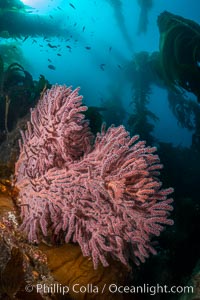
Brown Gorgonian Muricea fruticosa on underwater rocky reef, amid kelp forest, Catalina Island. The brown gorgonian is a filter-feeding temperate colonial species that lives on the rocky bottom at depths between 50 to 200 feet deep. Each individual polyp is a distinct animal, together they secrete calcium that forms the structure of the colony. Gorgonians are oriented at right angles to prevailing water currents to capture plankton drifting by.
Location: Catalina Island, California
Image ID: 37158
Location: Catalina Island, California
Image ID: 37158
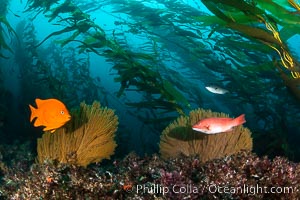
Garibaldi, juvenile sheephead and California golden gorgonian on underwater rocky reef, San Clemente Island. The golden gorgonian is a filter-feeding temperate colonial species that lives on the rocky bottom at depths between 50 to 200 feet deep. Each individual polyp is a distinct animal, together they secrete calcium that forms the structure of the colony. Gorgonians are oriented at right angles to prevailing water currents to capture plankton drifting by.
Species: California golden gorgonian, Giant kelp, Garibaldi, Muricea californica, Macrocystis pyrifera, Hypsypops rubicundus
Location: San Clemente Island, California
Image ID: 38522
Species: California golden gorgonian, Giant kelp, Garibaldi, Muricea californica, Macrocystis pyrifera, Hypsypops rubicundus
Location: San Clemente Island, California
Image ID: 38522
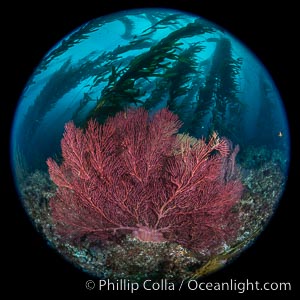
Brown gorgonians on rocky reef, below kelp forest, underwater. Gorgonians are filter-feeding temperate colonial species that live on the rocky bottom at depths between 50 to 200 feet deep. Each individual polyp is a distinct animal, together they secrete calcium that forms the structure of the colony. Gorgonians are oriented at right angles to prevailing water currents to capture plankton drifting by.
Species: Giant kelp, Brown gorgonian, Macrocystis pyrifera, Muricea fruticosa
Location: San Clemente Island, California
Image ID: 38523
Species: Giant kelp, Brown gorgonian, Macrocystis pyrifera, Muricea fruticosa
Location: San Clemente Island, California
Image ID: 38523
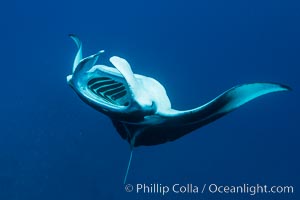
Manta Ray Feeding on Plankton, Fiji.
Species: Giant manta ray, Manta birostris
Location: Gau Island, Lomaiviti Archipelago, Fiji
Image ID: 31450
Species: Giant manta ray, Manta birostris
Location: Gau Island, Lomaiviti Archipelago, Fiji
Image ID: 31450
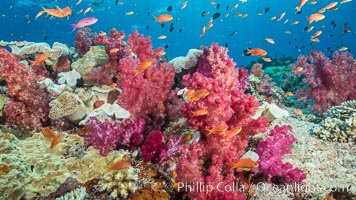
Dendronephthya soft corals and schooling Anthias fishes, feeding on plankton in strong ocean currents over a pristine coral reef. Fiji is known as the soft coral capitlal of the world.
Species: Anthias, Dendronephthya soft coral, Dendronephthya, Pseudanthias
Location: Vatu I Ra Passage, Bligh Waters, Viti Levu Island, Fiji
Image ID: 31651
Species: Anthias, Dendronephthya soft coral, Dendronephthya, Pseudanthias
Location: Vatu I Ra Passage, Bligh Waters, Viti Levu Island, Fiji
Image ID: 31651
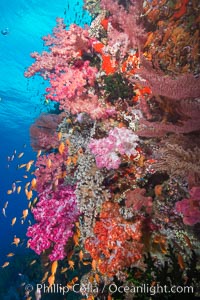
Dendronephthya soft corals and schooling Anthias fishes, feeding on plankton in strong ocean currents over a pristine coral reef. Fiji is known as the soft coral capitlal of the world.
Species: Anthias, Dendronephthya soft coral, Dendronephthya, Pseudanthias
Location: Vatu I Ra Passage, Bligh Waters, Viti Levu Island, Fiji
Image ID: 31667
Species: Anthias, Dendronephthya soft coral, Dendronephthya, Pseudanthias
Location: Vatu I Ra Passage, Bligh Waters, Viti Levu Island, Fiji
Image ID: 31667
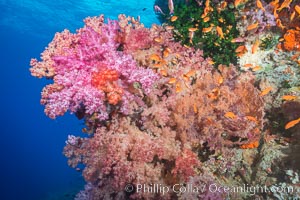
Dendronephthya soft corals and schooling Anthias fishes, feeding on plankton in strong ocean currents over a pristine coral reef. Fiji is known as the soft coral capitlal of the world.
Species: Anthias, Dendronephthya soft coral, Dendronephthya, Pseudanthias
Location: Vatu I Ra Passage, Bligh Waters, Viti Levu Island, Fiji
Image ID: 31668
Species: Anthias, Dendronephthya soft coral, Dendronephthya, Pseudanthias
Location: Vatu I Ra Passage, Bligh Waters, Viti Levu Island, Fiji
Image ID: 31668
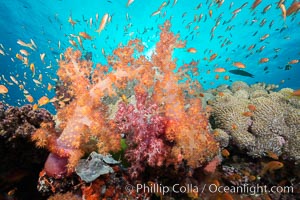
Dendronephthya soft corals and schooling Anthias fishes, feeding on plankton in strong ocean currents over a pristine coral reef. Fiji is known as the soft coral capitlal of the world.
Species: Anthias, Dendronephthya soft coral, Dendronephthya, Pseudanthias
Location: Gau Island, Lomaiviti Archipelago, Fiji
Image ID: 31713
Species: Anthias, Dendronephthya soft coral, Dendronephthya, Pseudanthias
Location: Gau Island, Lomaiviti Archipelago, Fiji
Image ID: 31713
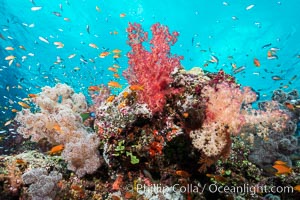
Dendronephthya soft corals and schooling Anthias fishes, feeding on plankton in strong ocean currents over a pristine coral reef. Fiji is known as the soft coral capitlal of the world.
Species: Anthias, Dendronephthya soft coral, Dendronephthya, Pseudanthias
Location: Gau Island, Lomaiviti Archipelago, Fiji
Image ID: 31715
Species: Anthias, Dendronephthya soft coral, Dendronephthya, Pseudanthias
Location: Gau Island, Lomaiviti Archipelago, Fiji
Image ID: 31715
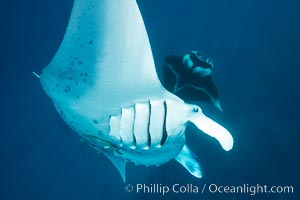
Manta Rays Feeding on Plankton, Fiji.
Species: Giant manta ray, Manta birostris
Location: Gau Island, Lomaiviti Archipelago, Fiji
Image ID: 31716
Species: Giant manta ray, Manta birostris
Location: Gau Island, Lomaiviti Archipelago, Fiji
Image ID: 31716
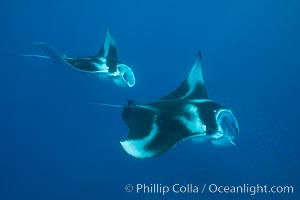
Manta Rays Feeding on Plankton, Fiji.
Species: Giant manta ray, Manta birostris
Location: Gau Island, Lomaiviti Archipelago, Fiji
Image ID: 31717
Species: Giant manta ray, Manta birostris
Location: Gau Island, Lomaiviti Archipelago, Fiji
Image ID: 31717
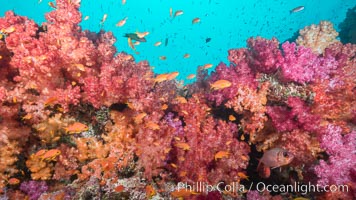
Dendronephthya soft corals and schooling Anthias fishes, feeding on plankton in strong ocean currents over a pristine coral reef. Fiji is known as the soft coral capitlal of the world.
Species: Anthias, Dendronephthya soft coral, Dendronephthya, Pseudanthias
Location: Gau Island, Lomaiviti Archipelago, Fiji
Image ID: 31718
Species: Anthias, Dendronephthya soft coral, Dendronephthya, Pseudanthias
Location: Gau Island, Lomaiviti Archipelago, Fiji
Image ID: 31718
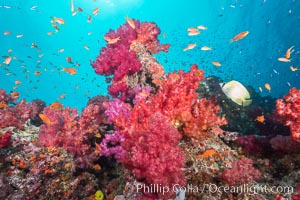
Dendronephthya soft corals and schooling Anthias fishes, feeding on plankton in strong ocean currents over a pristine coral reef. Fiji is known as the soft coral capitlal of the world.
Species: Anthias, Dendronephthya soft coral, Dendronephthya, Pseudanthias
Location: Gau Island, Lomaiviti Archipelago, Fiji
Image ID: 31721
Species: Anthias, Dendronephthya soft coral, Dendronephthya, Pseudanthias
Location: Gau Island, Lomaiviti Archipelago, Fiji
Image ID: 31721
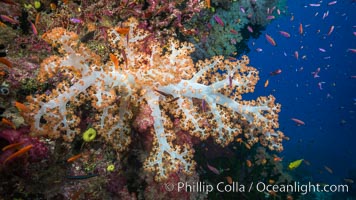
Dendronephthya soft corals and schooling Anthias fishes, feeding on plankton in strong ocean currents over a pristine coral reef. Fiji is known as the soft coral capitlal of the world.
Species: Anthias, Dendronephthya soft coral, Dendronephthya, Pseudanthias
Location: Namena Marine Reserve, Namena Island, Fiji
Image ID: 31804
Species: Anthias, Dendronephthya soft coral, Dendronephthya, Pseudanthias
Location: Namena Marine Reserve, Namena Island, Fiji
Image ID: 31804